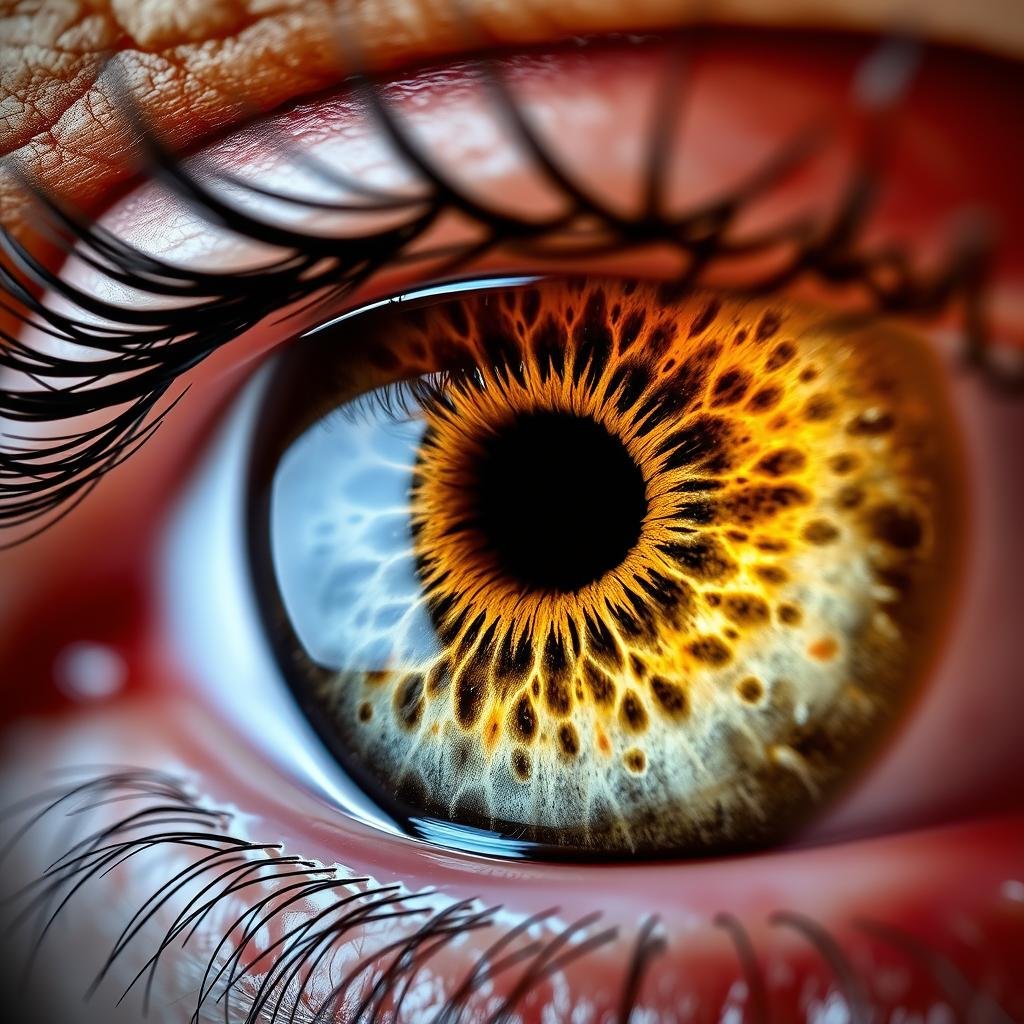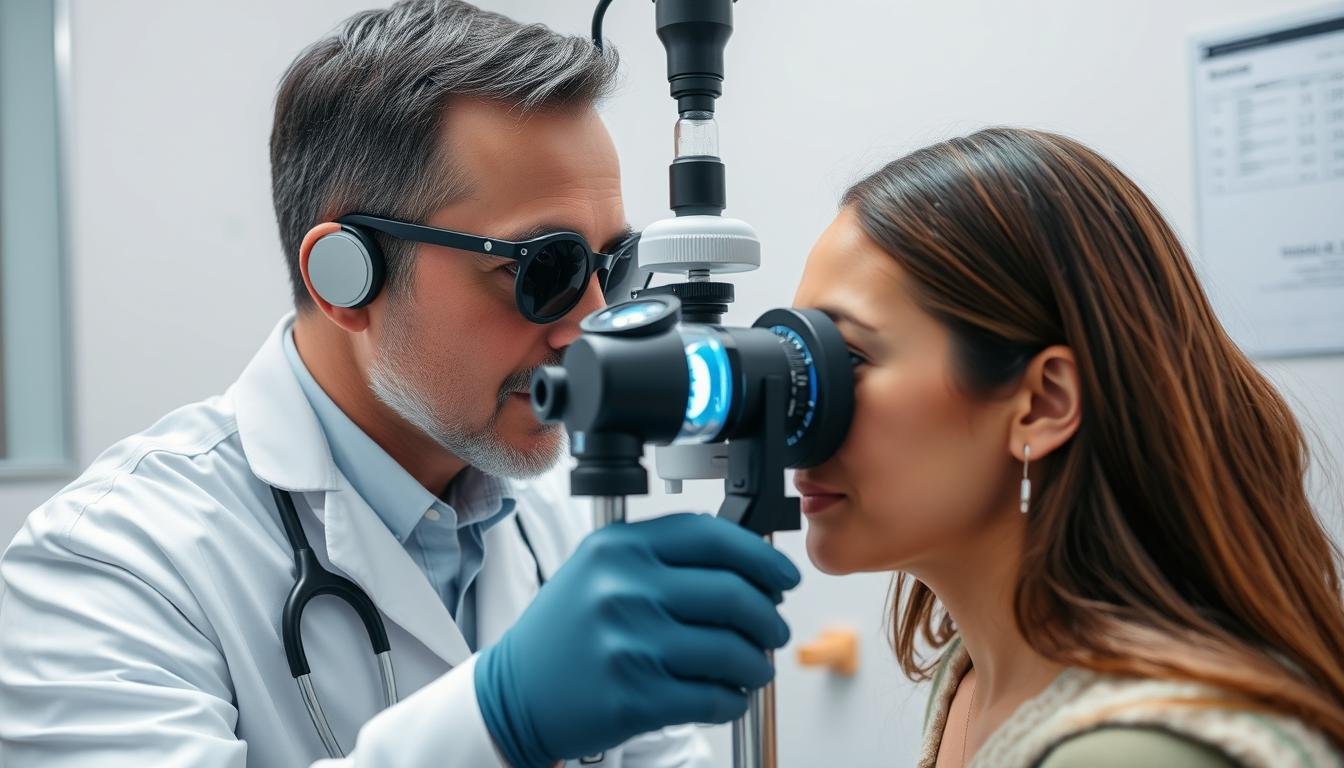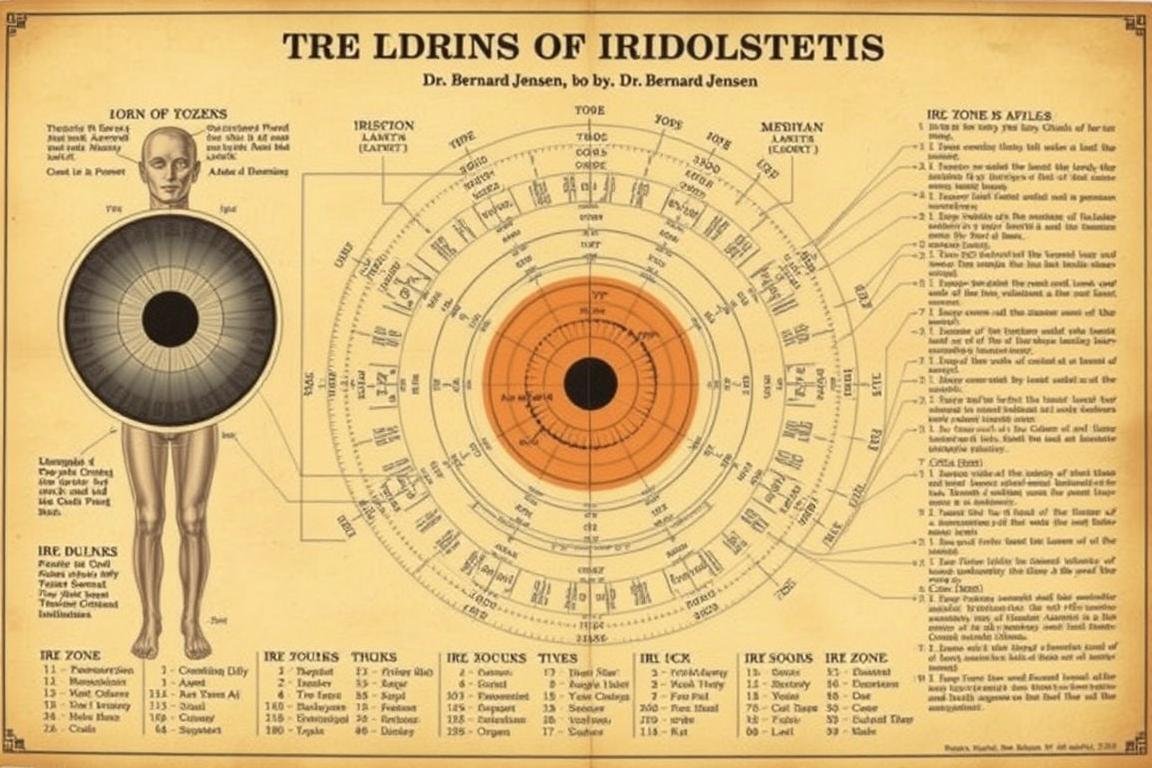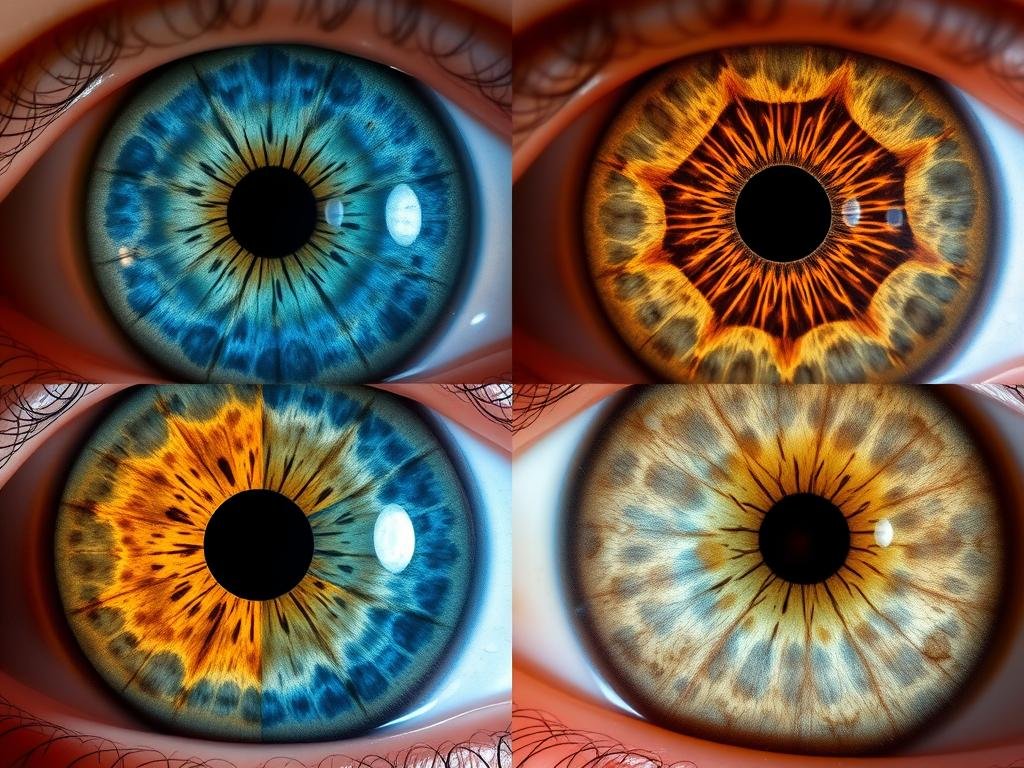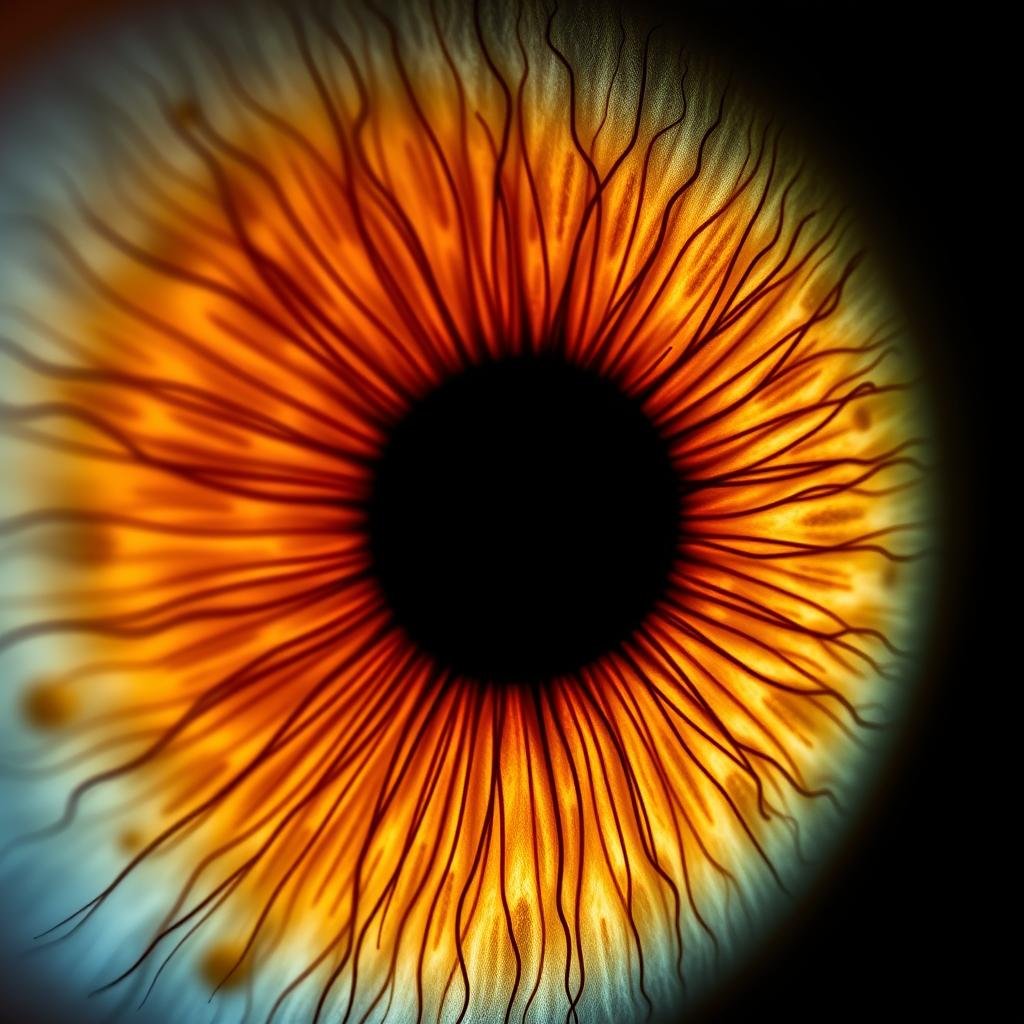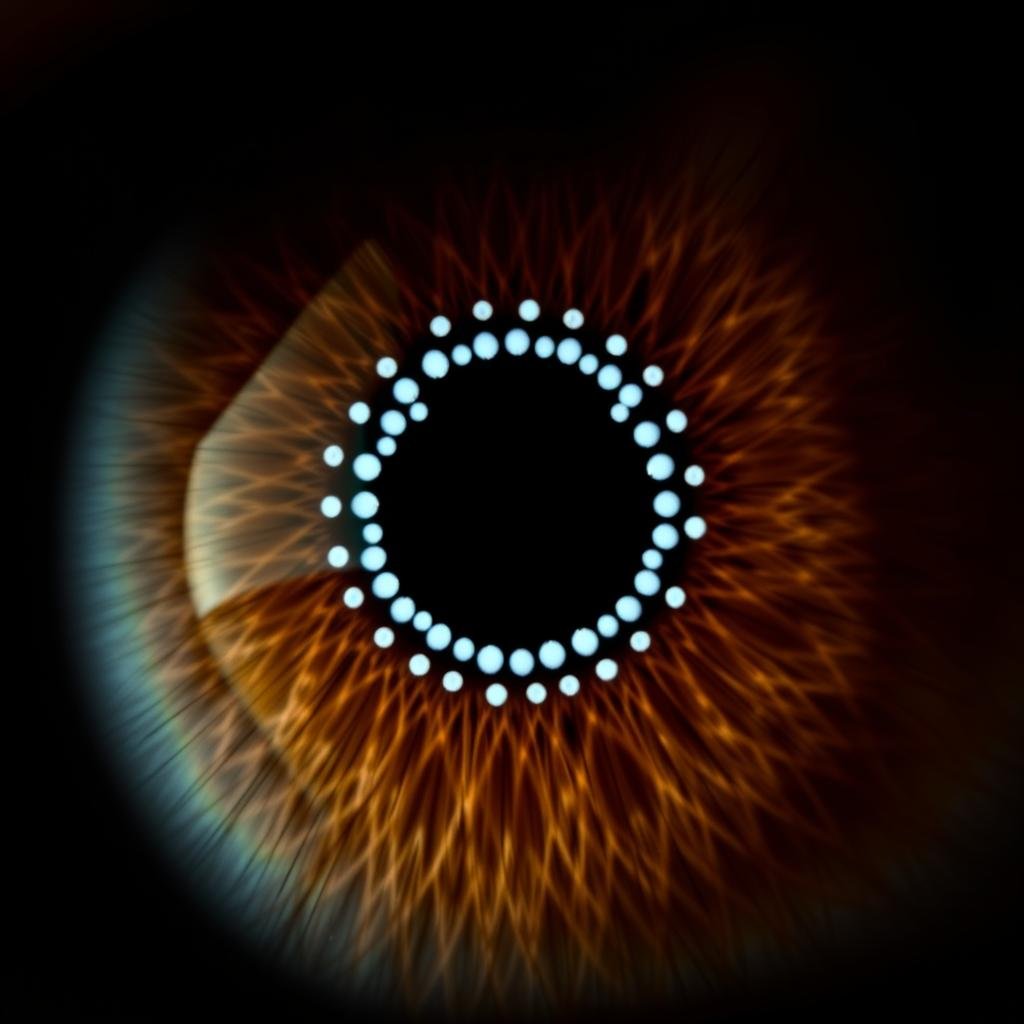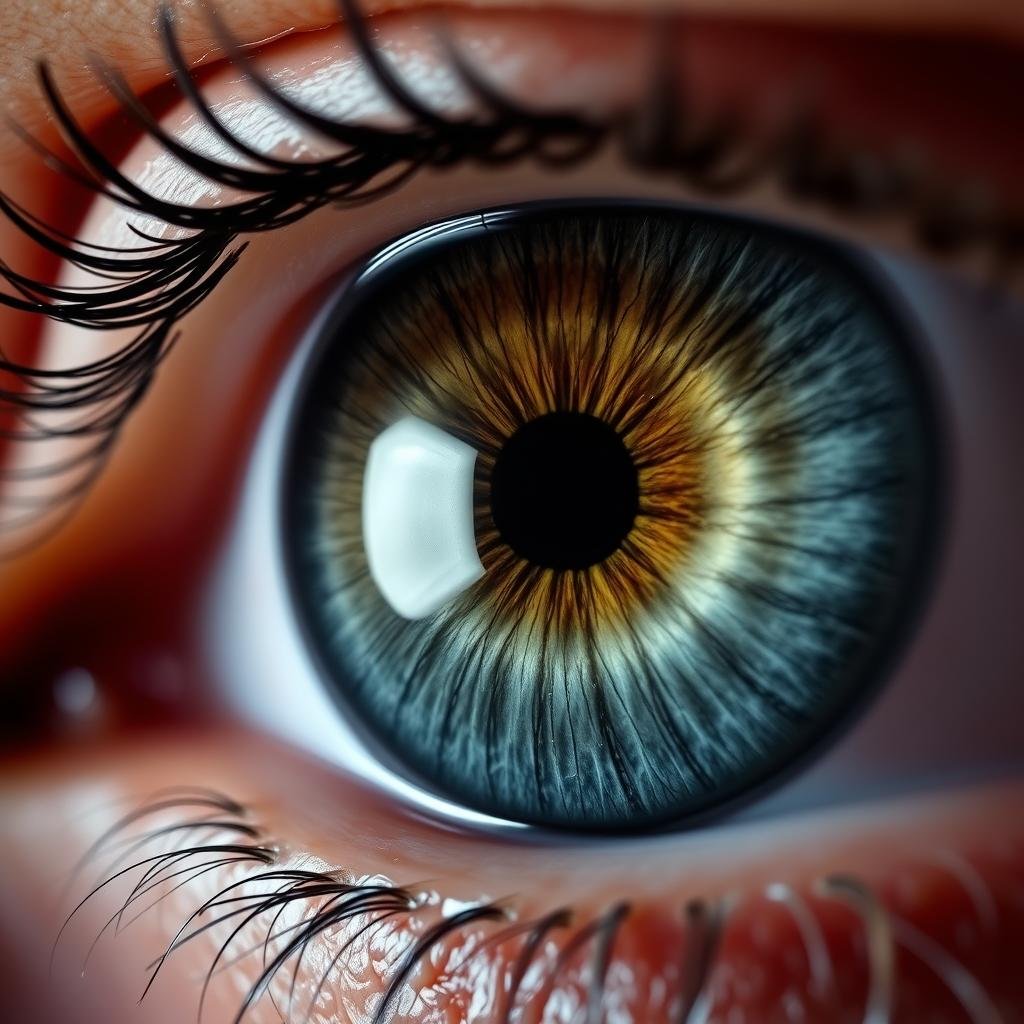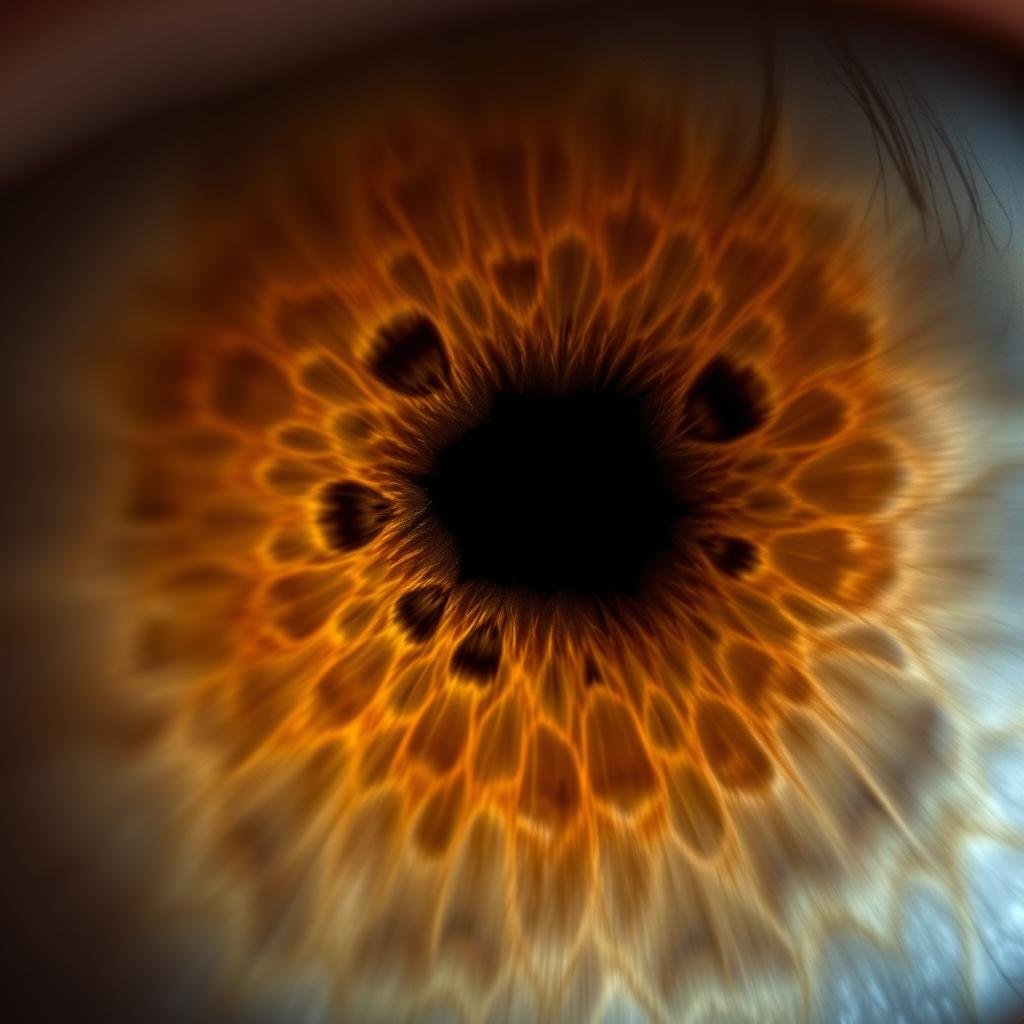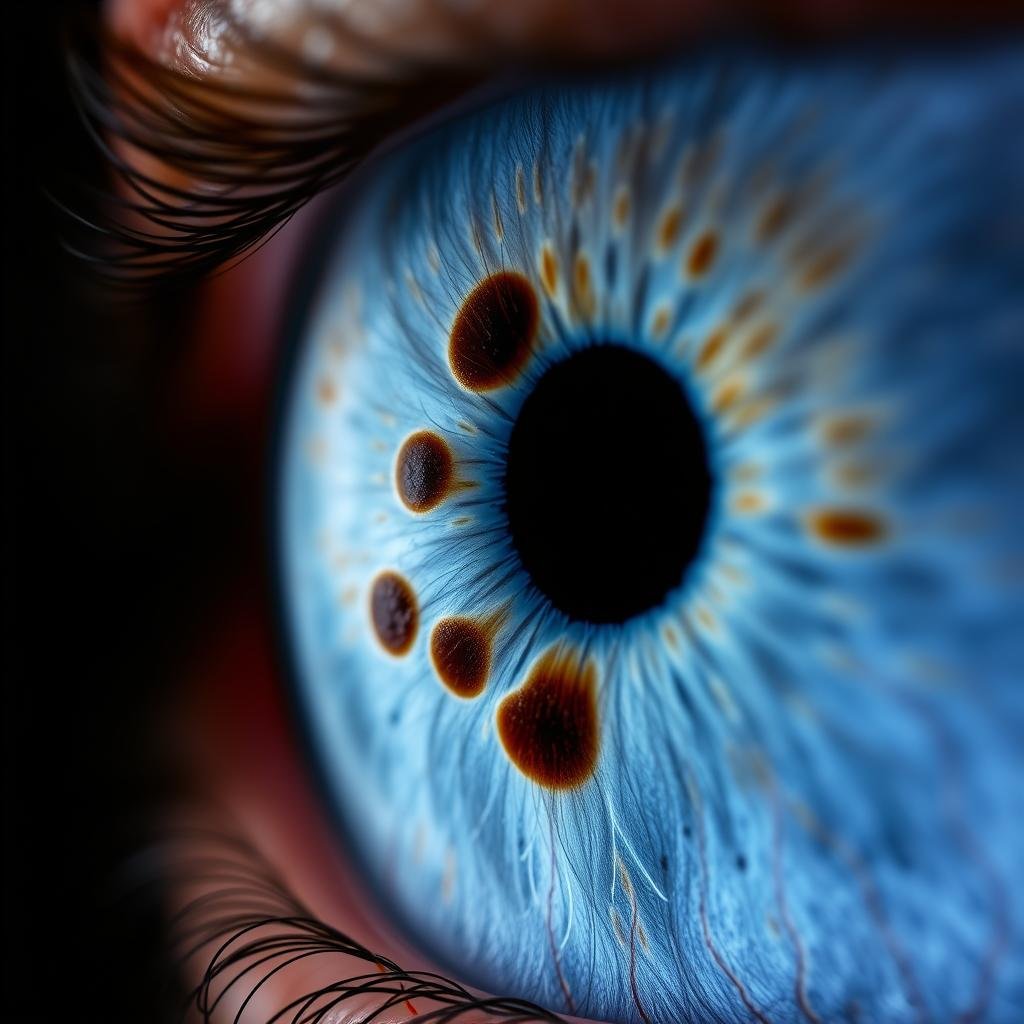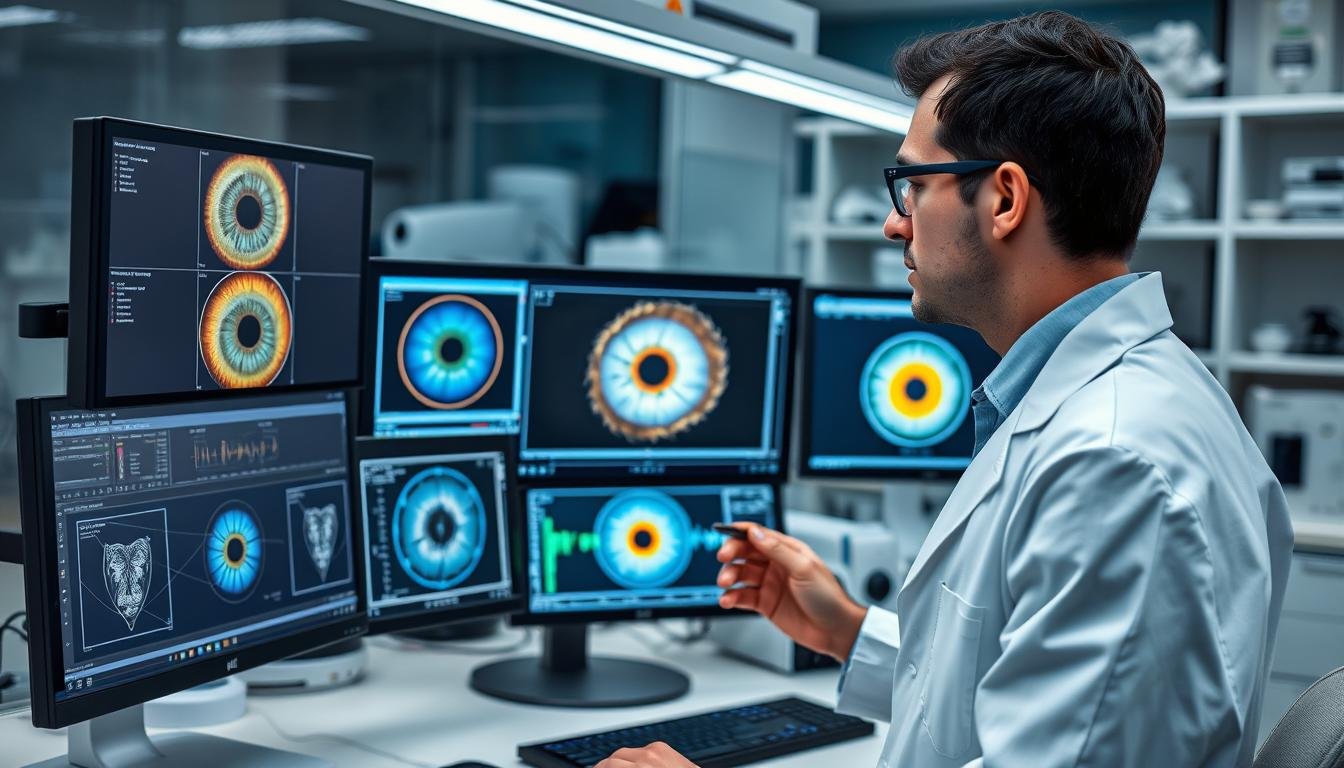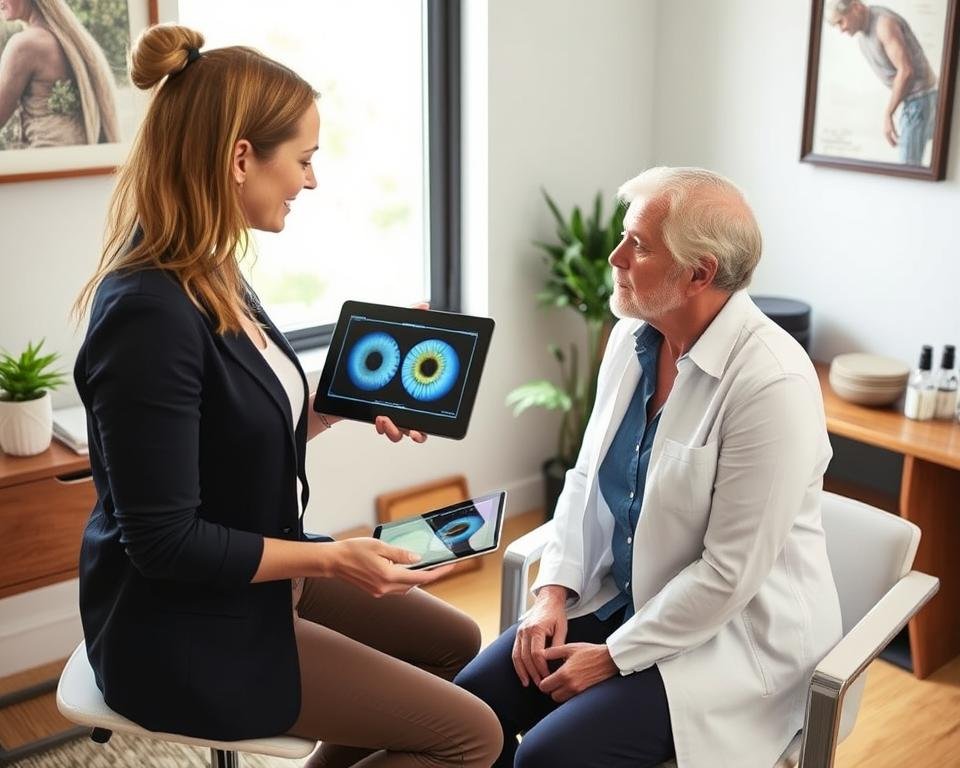A íris humana fascinou curandeiros e médicos por séculos. Com seus padrões intrincados e cores únicas, alguns acreditam que serve como um mapa para nossa saúde geral. A iridologia - o estudo da íris para avaliação da saúde - permanece uma prática controversa, mas persistente na medicina alternativa. Este guia abrangente explora o que é iridologia, como os praticantes a usam e o que a ciência tem a dizer sobre sua validade.
O que é iridologia e como funciona?
A iridologia (pronunciada ocular-rid-rid) é o estudo da íris-a parte colorida do olho-para identificar possíveis preocupações com a saúde e pontos fortes e fracos constitucionais. Os profissionais acreditam que cada área da íris corresponde a diferentes órgãos e sistemas dentro do corpo, criando o que eles descrevem como um “mapa” da condição do corpo.
De acordo com a teoria da iridologia, mudanças nas fibras de íris, pigmentação e estrutura podem indicar inflamação, acúmulo de toxinas ou disfunção de órgãos nas áreas corporais correspondentes. Os profissionais usam equipamentos especializados, como lentes de ampliação, câmeras e gráficos de comparação para analisar esses padrões.

Durante uma sessão de iridologia, o praticante normalmente tira fotografias de alta resolução de ambas as íris. Essas imagens são então comparadas com os gráficos de iridologia padronizados que dividem a íris em aproximadamente 60 zonas, cada uma correspondendo a diferentes partes do corpo. Diz -se que a íris certa reflete o lado direito do corpo, enquanto a íris esquerda corresponde ao lado esquerdo.
É importante observar que os iridologistas não afirmam diagnosticar doenças específicas, mas identificar áreas de potencial fraqueza, inflamação ou toxicidade que podem exigir atenção.
A história e as origens da iridologia
Enquanto alguns defensores sugerem que as formas de análise de íris existiam no Egito, na China e na Índia, mais de 3.000 anos atrás, a iridologia moderna é amplamente creditada ao médico húngaro Ignatz von Peczely no século XIX.
Segundo relatos populares, von percebeu que uma criança que ele havia ferido acidentalmente desenvolveu uma marca escura em sua íris. Essa observação despertou seu interesse na conexão entre as marcas de íris e lesões físicas ou condições. Anos depois, como médico, ele desenvolveu o primeiro gráfico de íris conhecido em 1880, mapeando correlações entre as marcas de íris e várias condições de saúde.
No início do século XX, o homeopata sueco Nils Liljequist desenvolveu ainda mais esses conceitos depois de observar mudanças em sua própria íris após a medicação. O quiroprático americano Bernard Jensen mais tarde popularizou a iridologia nos Estados Unidos durante a década de 1950, criando gráficos detalhados da íris que permanecem influentes na prática moderna.
Como os profissionais de iridologia afirmam detectar problemas de saúde
Os profissionais de iridologia usam vários indicadores -chave ao analisar a íris para possíveis problemas de saúde:
Tipos de constituição da íris
Os profissionais identificam primeiro o tipo básico de íris de uma pessoa ou “constituição,” que eles acreditam indica predisposições genéticas. Os principais tipos incluem:
- Linfático (Iris azul) – Associado à sensibilidade a problemas respiratórios e linfáticos
- Hematogênico (mistura azul-marrom) – Ligado ao sangue e tendências circulatórias
- Biliar (Brown Iris) – Conectado à função digestiva e hepática
- Neural (padrões mistas) – Relacionado à sensibilidade do sistema nervoso
Sinais comuns de íris e seus significados reivindicados

Sulcos radiais
As linhas do tipo falado que se estendem da pupila para fora são interpretadas como sinais de fraqueza digestiva ou baixa absorção de nutrientes.

Rosário linfático
Um anel de pontos brancos ou nuvens ao redor da íris está associado ao congestionamento do sistema linfático ou aos desafios imunológicos.

RIM SCURF
Acredita -se que um anel escuro ao redor da borda externa da íris indique baixa eliminação da pele e potencial acúmulo de toxinas.

Anéis nervosos
Os anéis circulares na íris são interpretados como sinais de tensão nervosa, estresse ou padrões de ansiedade.

Lacunas/lesões
As áreas mais escuras fechadas na íris estão associadas a possíveis disfunções de órgãos ou danos nos tecidos na área do corpo correspondente.

Manchas de pigmento
Acredita -se que manchas escuras ou manchas na íris indique depósitos de toxinas ou inflamação localizada em órgãos específicos.
Perspectiva científica sobre a validade da iridologia
As comunidades científicas e médicas examinaram extensivamente as reivindicações da iridologia, e o consenso entre os pesquisadores é amplamente cético. Vários estudos controlados falharam em validar a iridologia como um método de diagnóstico confiável.
Os proponentes discutem
- A íris contém milhares de terminações nervosas conectadas ao cérebro
- Histórias de sucesso anedóticas de profissionais e clientes
- Abordagem não invasiva da triagem de saúde
- Pode incentivar medidas preventivas de saúde
Preocupações científicas
- Falta de conexão anatômica entre a íris e a maioria dos órgãos corporais
- Estudos controlados mostram baixa precisão diagnóstica
- Os padrões de íris permanecem amplamente estáveis ao longo da vida
- Risco de diagnóstico perdido ou atrasado de condições graves
Um estudo significativo de 1979 publicado no Journal of the American Medical Association testou as habilidades de três iridologistas para detectar a doença da vesícula biliar de fotografias de íris. Os profissionais não conseguiram identificar com segurança os pacientes com condições confirmadas da vesícula biliar, realizando nada melhor que o acaso.
Da mesma forma, uma revisão sistemática de 2000 publicada no British Medical Journal concluiu que “A iridologia não é um método confiável de diagnóstico” Depois de analisar todos os ensaios controlados disponíveis. A revisão alertou que a iridologia poderia levar a aconselhamento inadequado à saúde ou atrasar o tratamento médico adequado.

Iridologia vs. diagnóstico médico convencional
| Aspecto | Iridologia | Medicina convencional |
| Abordagem diagnóstica | Examina padrões de íris para identificar possíveis fraquezas de saúde | Usa várias ferramentas de diagnóstico (testes de laboratório, imagem, exames físicos) para identificar condições específicas |
| Validação científica | Apoio científico limitado; não reconhecido pelo medicamento convencional | Com base em pesquisas e ensaios clínicos revisados por pares |
| Treinamento do praticante | Varia amplamente; Sem requisitos médicos padronizados | Educação médica padronizada com extenso treinamento clínico |
| Foco no tratamento | Muitas vezes enfatiza medidas preventivas e abordagens holísticas | Concentra -se no tratamento de condições identificadas com intervenções comprovadas |
| Supervisão regulatória | Regulamentação mínima na maioria dos países | Fortemente regulamentado com requisitos de licenciamento |
Enquanto a medicina convencional depende de biomarcadores mensuráveis, estudos de imagem e exames físicos para diagnosticar condições específicas, a iridologia adota uma abordagem mais holística focada em tendências constitucionais e possíveis fraquezas. Muitos profissionais de saúde sugerem que essas abordagens não precisam ser mutuamente exclusivas - alguns pacientes usam a iridologia como uma ferramenta complementar, mantendo cuidados médicos regulares.
Benefícios potenciais e controvérsias de iridologia
Benefícios potenciais
Apesar do ceticismo científico, alguns indivíduos relatam valor em consultas de iridologia:
- Perspectiva holística da saúde – Incentiva a visualização da saúde como um sistema interconectado, em vez de sintomas isolados
- Foco preventivo – Pode motivar mudanças no estilo de vida antes que problemas graves de saúde se desenvolvam
- Avaliação não invasiva – Não requer que não seja dado o sangue, radiação ou procedimentos desconfortáveis
- Abordagem personalizada – Considera diferenças constitucionais individuais em vez de recomendações de tamanho único
Principais controvérsias
Várias preocupações significativas foram levantadas sobre a prática de iridologia:
Consideração importante: A iridologia nunca deve substituir o diagnóstico médico adequado. Confiar apenas na iridologia pode potencialmente atrasar o tratamento médico necessário para condições graves.
- Confiabilidade diagnóstica – Vários estudos mostram baixa precisão na identificação de condições de saúde específicas
- Variabilidade do praticante – A falta de treinamento padronizado leva a interpretações inconsistentes
- Dano potencial – Pode causar ansiedade desnecessária ou falsa garantia sobre o estado de saúde
- Preocupações financeiras – Sessões e suplementos recomendados podem ser caros com benefícios questionáveis

Perguntas freqüentes sobre iridologia
A iridologia é cientificamente comprovada?
Não, a iridologia não foi cientificamente validada por meio de pesquisas rigorosas. Vários estudos controlados, incluindo uma revisão significativa publicada no British Medical Journal, descobriram que os profissionais de iridologia não podem diagnosticar de maneira confiável as condições de saúde por meio do exame de íris. O consenso científico entre os pesquisadores médicos é que a iridologia carece de evidências suficientes para apoiar suas reivindicações de diagnóstico.
A iridologia pode substituir o diagnóstico médico?
Não, a iridologia não deve substituir o diagnóstico médico convencional. Mesmo os profissionais da iridologia geralmente reconhecem que é melhor usada como uma ferramenta de avaliação complementar, e não como substituto para cuidados médicos. Preocupações graves de saúde devem sempre ser avaliadas por profissionais qualificados de saúde usando métodos de diagnóstico baseados em evidências. Confiar apenas na iridologia poderia potencialmente atrasar o tratamento necessário para condições graves.
Quanto custa uma sessão de iridologia?
Os custos da sessão de iridologia variam amplamente, dependendo da experiência, localização e profundidade da análise do profissional. As sessões básicas geralmente variam de -0, enquanto análises abrangentes com relatórios detalhados podem custar 0-0 ou mais. Alguns profissionais incluem iridologia como parte de consultas naturapáticas ou holísticas mais amplas de saúde.
Os padrões de íris mudam com as melhorias na saúde?
Este é um ponto de discórdia. Alguns iridologistas afirmam que certas marcações de íris podem mudar à medida que a saúde melhora, principalmente em relação aos níveis de inflamação ou acúmulo de toxinas. No entanto, oftalmologistas e pesquisadores médicos sustentam que as estruturas da íris permanecem amplamente estáveis ao longo da vida após a primeira infância, exceto nos casos de lesão ou doença direta. O padrão e a estrutura básicos da íris são geneticamente determinados e normalmente não mudam com o estado geral de saúde.
Entendendo a iridologia no contexto
A iridologia representa um dos muitos métodos de avaliação alternativos que adotam uma abordagem holística da saúde. Embora as evidências científicas atualmente não apóiem suas reivindicações de diagnóstico, algumas pessoas encontram valor nas informações de saúde personalizadas e foco preventivo que ele oferece.
Para os interessados em explorar a iridologia, é importante manter as expectativas realistas e usá -la como uma ferramenta complementar, e não como um substituto para os cuidados médicos convencionais. A abordagem mais responsável é trabalhar com os profissionais que reconhecem as limitações da iridologia e incentivar o acompanhamento médico apropriado para qualquer descoberta preocupante.
Seja vista como uma prática histórica fascinante ou uma potencial ferramenta de saúde complementar, a iridologia continua a despertar discussões sobre a relação entre características físicas observáveis e estado geral de saúde.
Explore a iridologia com uma consulta profissional
Curioso sobre o que sua íris pode revelar? Nossos profissionais certificados fornecem consultas educacionais de iridologia que podem fazer parte de sua jornada holística de saúde. Enfatizamos a prática responsável que complementa, em vez de substituir, os cuidados médicos convencionais.
Reserve uma consulta
Referências
- Knipschild P. (1988). Procurando por uma doença da vesícula biliar na íris do paciente. British Medical Journal, 297 (6663), 1578-1581.
- Ernst E. (2000). Iridologia: não é útil e potencialmente prejudicial. Arquivos de Oftalmologia, 118 (1), 120-121.
- Münstedt K, El-Safadi S, Brück F, Zygmunt M, Hackethal A, Tinneberg HR. (2005). A iridologia pode detectar suscetibilidade ao câncer? Um estudo prospectivo controlado por caso. Jornal de Medicina Alternativa e Complementar, 11 (3), 515-519.
- Simon A, Worthen DM, Mitas Ja 2nd. (1979). Uma avaliação da iridologia. Jama, 242 (13), 1385-1389.
- Ernst E. (1999). Iridologia: uma revisão sistemática. Pesquisando Medicina Complementar, 6 (1), 7-9.

